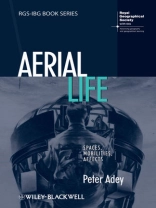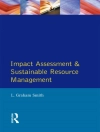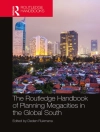NOMINATED AND SHORT LISTED FOR THE SURVEILLANCE STUDIES BOOK
PRIZE 2011!
This theoretically informed research explores what the
development and transformation of air travel has meant for
societies and individuals.
* Brings together a number of interdisciplinary approaches
towards the aeroplane and its relation to society
* Presents an original theory that our societies are aerial
societies, or ’aerealities’, and shows how we are both enabled and
threatened by aerial mobility
* Features a series of detailed international case studies which
map the history of aviation over the past century – from the
promises of early flight, to World War II bombing campaigns, and to
the rise of international terrorism today
* Demonstrates the transformational capacity of air transport to
shape societies, bodies and individual identities
* Offers startling historical evidence and bold new ideas about
how the social and material spaces of the aeroplane are considered
in the modern era
Innehållsförteckning
Figures and Tables ix
Series Editors’ Preface x
Acknowledgements xi
1 Introduction 1
Prologue 1
Overview 6
Aerial Life 8
Powering Up Aerial Geographies 13
The Organization of the Book 21
Part One Becoming Aerial 23
2 Birth of the Aerial Body 25
Introduction 25
Beginnings 28
’Handsome Is as Handsome Does’: Disassembling the Aerial Body 30
The Flesh of the Aerial Youth 41
Simulation 45
Conclusion 52
3 The Projection and Performance of Airspace 54
Introduction 54
Building a Political Space: Identity, Boundedness and the Sanctity of Territory 57
Undoing Aerial Space: Post-nationalism and Projective Power 70
Conclusion 80
Part Two Governing Aerial Life 83
4 Aerial Views: Bodies, Borders and Biopolitics 85
Introduction 85
Seeing the Wood for the Trees: Targeting, Administering and Managing Populations 86
Techniques of the Observer/Observed 103
Three-Dimensional Vision 109
Conclusion 113
5 Profiling Machines 114
Introduction 114
Imagining the Pilot/Passenger 117
Sorting 124
Modifying 132
Conclusion 144
Part Three Aerial Aggression 145
6 Aerial Environments 147
Introduction 147
The Emergence of a Target 149
Systems, Circulations and Ecological Warfare 161
Air Conditioning 170
Conclusion 177
7 Subjects under Siege 179
Warning 179
Introduction 181
The Anatomy of Panic 185
Imaginations and Urgencies 189
Vigilance and the Social as Circuit 191
Entrainment 198
Conclusion 205
8 Conclusion 206
Environments 207
Futures 208
Aerial Turns 209
Notes 211
Bibliography 228
Index 255
Om författaren
Peter Adey is Lecturer in Cultural Geography at Keele University, Staffordshire, England. His research interests include the study of mobility and cultures of aviation and security. Adey is the author of Mobility (2009).












